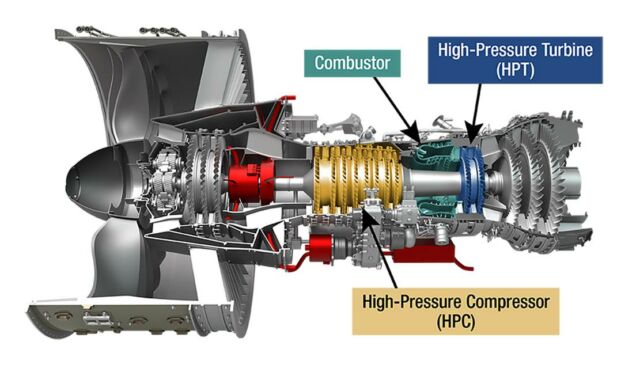|
Getting your Trinity Audio player ready...
|
This artist concept shows a NASA-developed small-core jet engine installed in General Electric Aerospace’s CFM RISE jet engine design. GE Aerospace
NASA and industry partners are moving to the next stage in designing Hybrid Thermally Efficient Core (HyTEC), a new jet engine for ultra-efficient airliners.
This project aims to create a smaller, hybrid-electric turbofan engine core, which could cut fuel use by 10% compared to current engines.
In a jet engine, the core is where compressed air mixes with fuel and ignites to produce power. By reducing the size of this core, fuel efficiency improves, and carbon emissions decrease.

The cross-section of a typical turbofan jet engine highlights parts of the core HyTEC that will work to advance. NASA
The project, called Hybrid Thermally Efficient Core (HyTEC), aims to showcase this compact core and prepare it for use in next-generation aircraft by the 2030s. HyTEC is a crucial part of NASA’s Sustainable Flight National Partnership.
To achieve its ambitious goal, HyTEC is structured in two phases:
Phase 1, which is wrapping up, focused on selecting the component technologies to use in the core demonstrator.
Phase 2, starting now, will see researchers design, build, and test a compact core in collaboration with GE Aerospace.
Anthony Nerone, who leads HyTEC at NASA’s Glenn Research Center in Cleveland, said:
“Phase 1 of HyTEC is winding down and we are ramping up Phase 2. This phase will culminate in a core demonstration test that proves the technology so it can transition to industry.”
source NASA



